マルチシグネチャを使用する数千のノードが BTC 再ステーキングの未来をどのように切り開くか
過去2 つのサイクルの主要テーマが DeFi と NFT だった場合、現在のサイクルのキーワードは間違いなくビットコイン エコシステムです。
2024 年の第 1 四半期にビットコインが歴史的高値に達する中、ビットコイン エコシステムには、増大する需要に応えるためのより充実した高度なインフラがまだ不足していることを認識し始めており、ビットコイン エコシステムはより具体的な発展の道に向けて動き始めています。には、ビットコイン レイヤー 2、ビットコイン DeFi、ビットコイン クロスチェーン テクノロジーが含まれており、これらの分野の中で、ビットコイン クロスチェーン テクノロジーが最も重要な役割を果たします。
ミラー プロトコルが L2 のセキュリティをどのように再定義するか
ビットコインがアプリケーションシナリオにどのように参加できるかという「ゴールドラッシュ」の中で、ミラーステーキングプロトコルは、別のビットコインレイヤー2プロジェクトになるのではなく、サイドラインで「安全ヘルメット」を販売することを選択し、ビットコインに匹敵する分散化の橋渡しをします。 「ゴールドディガー」の新たな波。
実装が簡単でコスト効率が高いオープンソース バージョンが多数あるため、現在、ほとんどのビットコイン レイヤ 2 ソリューションは、マルチ署名 (マルチシグネチャ) とイーサリアム仮想マシン (EVM) 方式の組み合わせを採用しています。 -パーティ計算 (MPC) マルチシグネチャ スキーム、しきい値署名スキーム、ハッシュ ロック、またはディスクリート ログ コントラクト (DLC) は、そのコアがマルチシグネチャと EVM を中心に展開されます。この方法により、ユーザーはビットコインをマルチ署名にクロスチェーンすることができます。署名は EVM チェーン上でアドレス指定して新しいビットコイン トークンを生成し、EVM スマート コントラクトの機能と互換性を持たせます。
多くのビットコイン レイヤー 2 プロジェクトは、ビットコイン レイヤー 2 ステーク ファンドのセキュリティ問題について議論することに消極的であり、さらには自らの集中セキュリティ リスクを意図的に隠蔽しています。しかし、ビットコイン レイヤー 2 のセキュリティは重要なテーマです。Luna の崩壊はすでに忘れられています。スリーアロー、そして2022年のFTX? ビットコインレイヤー2プロジェクト自体にとって、セキュリティはプロジェクトの死活を決定する重要な要素である ユーザーにとって、ビットコインアプリケーションシナリオのセキュリティはステークの安全性と流動性リスクに直接関係します。資産が侵害され、セキュリティ侵害が発生すると、重大な経済的損失が発生する可能性があります。
これに関連して、独自のセキュリティ保証スキームを備えたミラー ステーキング プロトコル (ミラー プロトコルと呼ばれます) は、BTC クロスチェーンのセキュリティと自由に出入りするノードの特性を再定義します。
ミラー プロトコルは、真に分散型でトラストレスなビットコイン ステーキング プロトコルであり、多数の PoS L1/L2 にビットコインをインポートするための真の分散型で安全なソリューションを提供します。テストネットはすでに公開されており、監査済みです。スローミストによる。
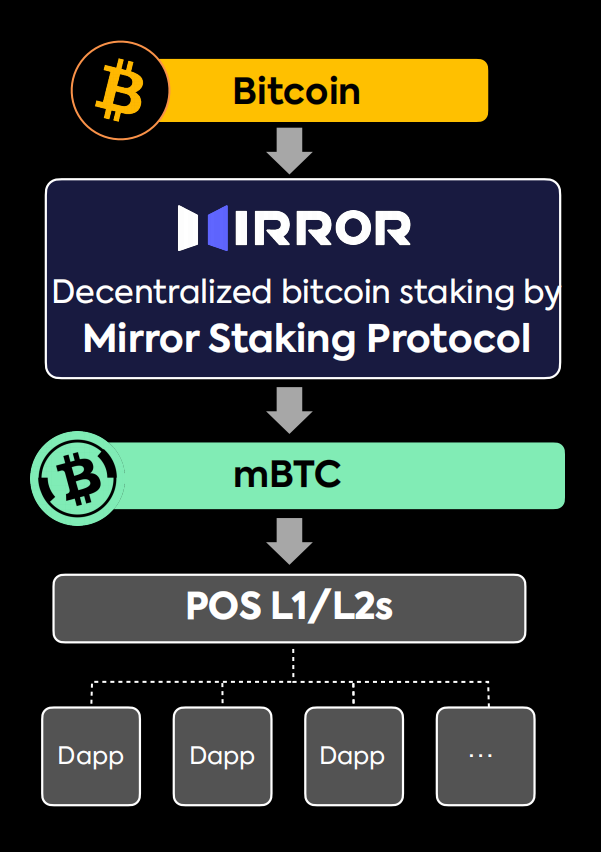
重複するマルチシグネチャ グループ (MSG) アルゴリズム
ミラー プロトコルの核となる革新は、オーバーラップ マルチシグネチャ グループ (MSG) アルゴリズムであり、ビットコイン レイヤ 2 プロジェクトのセキュリティを確保する方法でもあります。
このアルゴリズムは検証され、一流の論文「Rational Adversary に対するセキュリティを備えた分散型資産管理スキーム」で発表され、権威ある Web and Internet Economy (WINE) カンファレンスに含まれています。
この論文は、カストディアンの担保の数倍に相当する大量の顧客資産を安全に管理できる分散型資産保管フレームワークを提案しています。このフレームワークは、カストディアンと資産を複数のカストディアングループに分散させることで管理コストを削減し、活動を増加させます。各カストディアン グループ内での決定には、十分な数のグループ メンバーの同意が必要ですが、このフレームワークでは、グループ内での取引をより効率的に処理できます。単一のアクティブなカストディアン グループでもトランザクションを処理できるため、計算コストと通信コストが大幅に削減され、グループ メンバーの数が非常に少なくなります。
実際の実装では、ミラーグループノードはマルチシグネチャグループレベルで構成され、各グループは任意の 5 つのノードで構成され、これら 5 つのうち 3 つがマルチシグネチャを介して資産の流入と流出を制御できます。また、各ノードは 1 つをステーキングする必要があります。不正行為に対するペナルティとしてのmBTC。
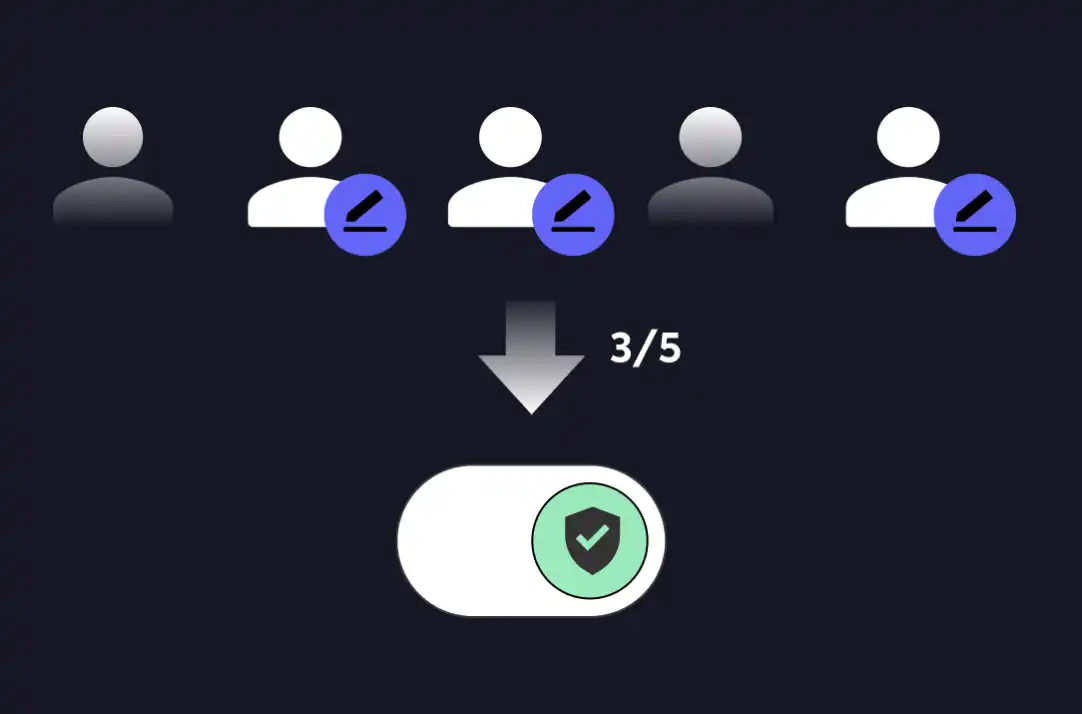
重複グループの場合、各ノードは他の 4 つのノードとグループ化して、1,000 個のノードがある場合、3,000 のグループが形成される可能性があります。
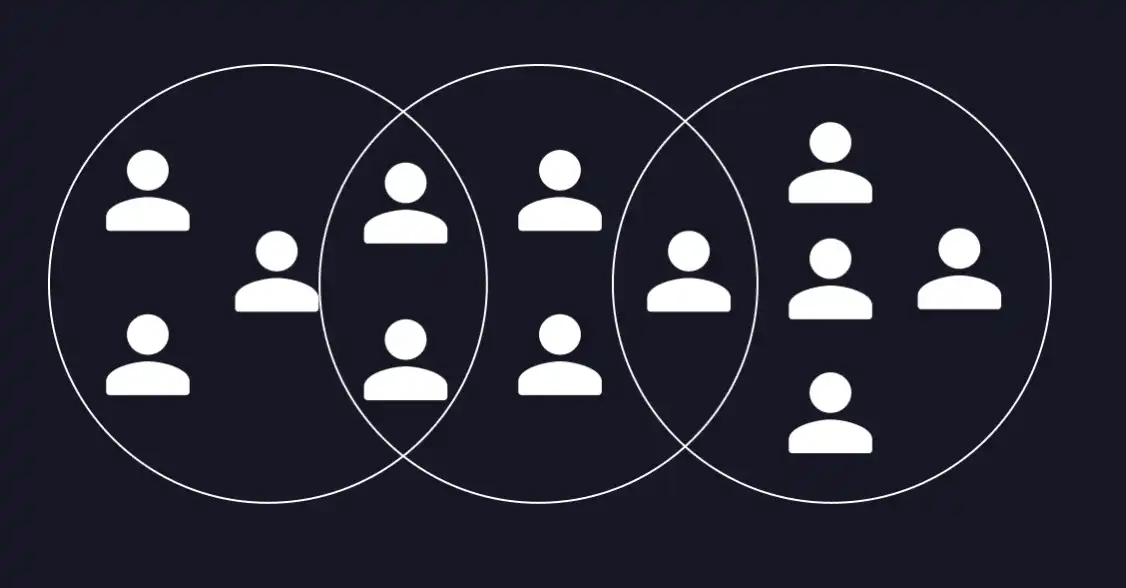
ミラープロトコルの独自の設計は、ビットコインをイーサリアムにマッピングするなど、クロスチェーン資産マッピングに適しているだけでなく、合理的な敵対者モデルを通じて、部分的な破損の場合でも保管サービスの資本コストを効果的に削減します。カストディアンのうち、担保を超える多額の顧客資産が保護されています。
革新的なアルゴリズムと細心の注意を払った設計により、ミラー プロトコルは、PoS L1/L2 プロジェクトのステーキングとセキュリティ保証のための新しいメカニズムを提供します。これは、ビットコインのアプリケーション シナリオの拡張に役立つだけでなく、ステーキングを行うことでステーキング レート、セキュリティ、分散化を最適化します。資産は数千のノードによって共同管理されます。
さらに、ミラープロトコルのアルゴリズムの実用化は、モジュラーブロックチェーン設計の概念を体現しており、ビットコインと1:1でペグされたmBTCを生成することで、EVMとの互換性を実現し、Solanaを含むマルチチェーンエコシステムへの拡張を計画しています。 、トン、ベラなど)このメカニズムは再ステーキングもサポートしており、ユーザーは主流のEVM DAppsでmBTCを再取得できるため、分散型金融(DeFi)エコシステムにおける可能性がさらに高まります。
資金調達とチームの背景
新しい資産保管アルゴリズムを実装できることも、Mirror Protocol チームの成功を保証する重要な要素です。このチームは、Microsoft、Google、MIT、清華大学 Yao Class などのトップ機関や企業のエリートで構成されています。前述のトップレベルの論文のメンバーであり、CSO の Zhaohua Chen 氏 (北京大学博士課程卒業) と Guang Yang 氏 (Conflux) は、Web およびインターネット経済学で認められています。 WINE) カンファレンスで、ブロックチェーン技術とセキュリティにおけるチームの深い能力を実証 この論文が WINE カンファレンスに掲載されたことを受けて、北京大学計算フロンティアセンター (CFCS) の公式アカウントもお祝いのメッセージを投稿しました。
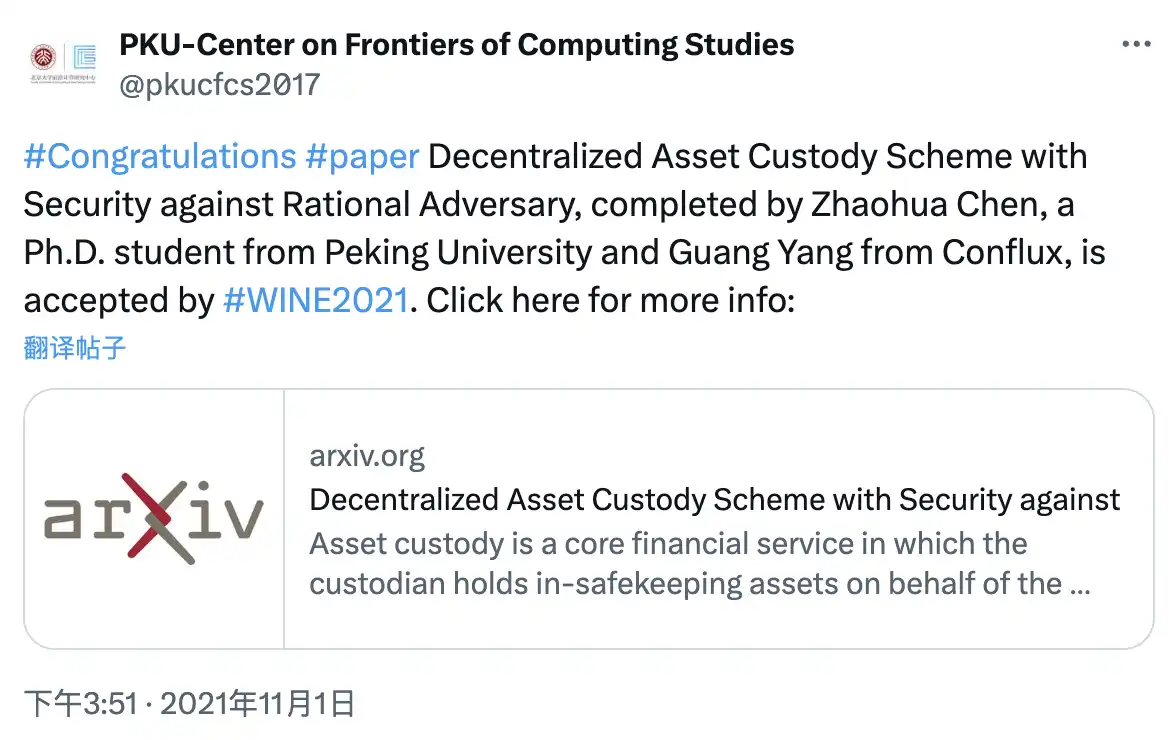
資金調達の背景に関しては、具体的な金額はまだ明らかにされていないが、ミラープロトコルのシードラウンドはUTXO(BTCマガジンの投資部門)、CMSホールディングス、コンフラックス、そして特にビットコインマガジンのIMOベンチャーズから投資を受けた。 2012 年に設立され、ビットコイン情報に焦点を当てた最も古く、最も成熟した情報源の 1 つであり、ビットコインのアプリケーション シナリオに関する広範な研究が行われています。
**分散型ノード選出プロセス:**
オーバーラップ マルチシグネチャ グループ (MSG) アルゴリズムの設計の一部として、ミラー プロトコルでは、より分散化され権限を与えられたノード選択プロセスと戦略が導入されました。
**ノードの選択プロセスは次のとおりです:**
1. ミラー プロトコル ノードの立候補は Twitter で正式に発表され、ノード選挙委員会とミラー チームによって確認されます。
2. 投票期間中、コミュニティ メンバーは Mirror の Twitter アカウントで投票でき、投票数で上位 100 ノードが自動的に選出され、技術チームがノードのセットアップを支援します。
この方法を通じて、Mirror は数百のノードを生成し、MIRR トークンをサブスクライブする権利を付与します。これにより、ユーザーは MIRROR のノード投資家になる人を選択できるようになり、ノードは最大 120,000 ドルのサブスクリプション権利を受け取ることができます。ユーザーによって選出された 500 人の影響力のあるノード投資家。個人の KOL、機関、メディア団体、プロジェクトなど、誰でもノード投資家になれます。
**ノードの増加、担保率の低下:**
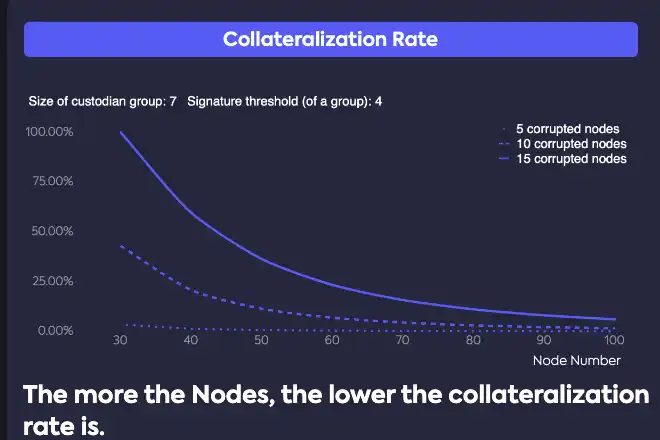
ミラー ステーキング プロトコルのノード選出プロセスは 4 ラウンドで実行され、ノード数がそれぞれ 100、300、600、1000 ノードと段階的に増加します。最初のラウンドでは 100 ノードが選出されます。
セキュリティを確保するために、ノードはミラー ステーキング プロトコルに少なくとも 1 mBTC をステークし、12 か月間分散管理者として機能する必要があります。ノード選出のチャンピオンは特別な報酬、つまり 100 万 MIRR (ミラーのガバナンス トークン) を購入するオプションを受け取ります。 1 位以降に選択されたノードの場合、最初のラウンドの行使価格は次の表に従って決まります。その後のラウンドでも行使価格は 0.12 ドルに設定されます。ミラーステーキングプロトコルノードの選出プロセスと選出されたノードの責任と権利の詳細は、市場価格に応じて徐々に調整されます。
現在、ミラー ステーキング プロトコルは、3 週間以内に 200 人を超える KOL と 50 を超えるプロジェクト機関を集め、X などのソーシャル メディア プラットフォームで選挙に立候補させています。さらに、この選挙には 50,000 人を超える独立したアドレスからの参加が集まっています。総投票数は300万票を超えました。
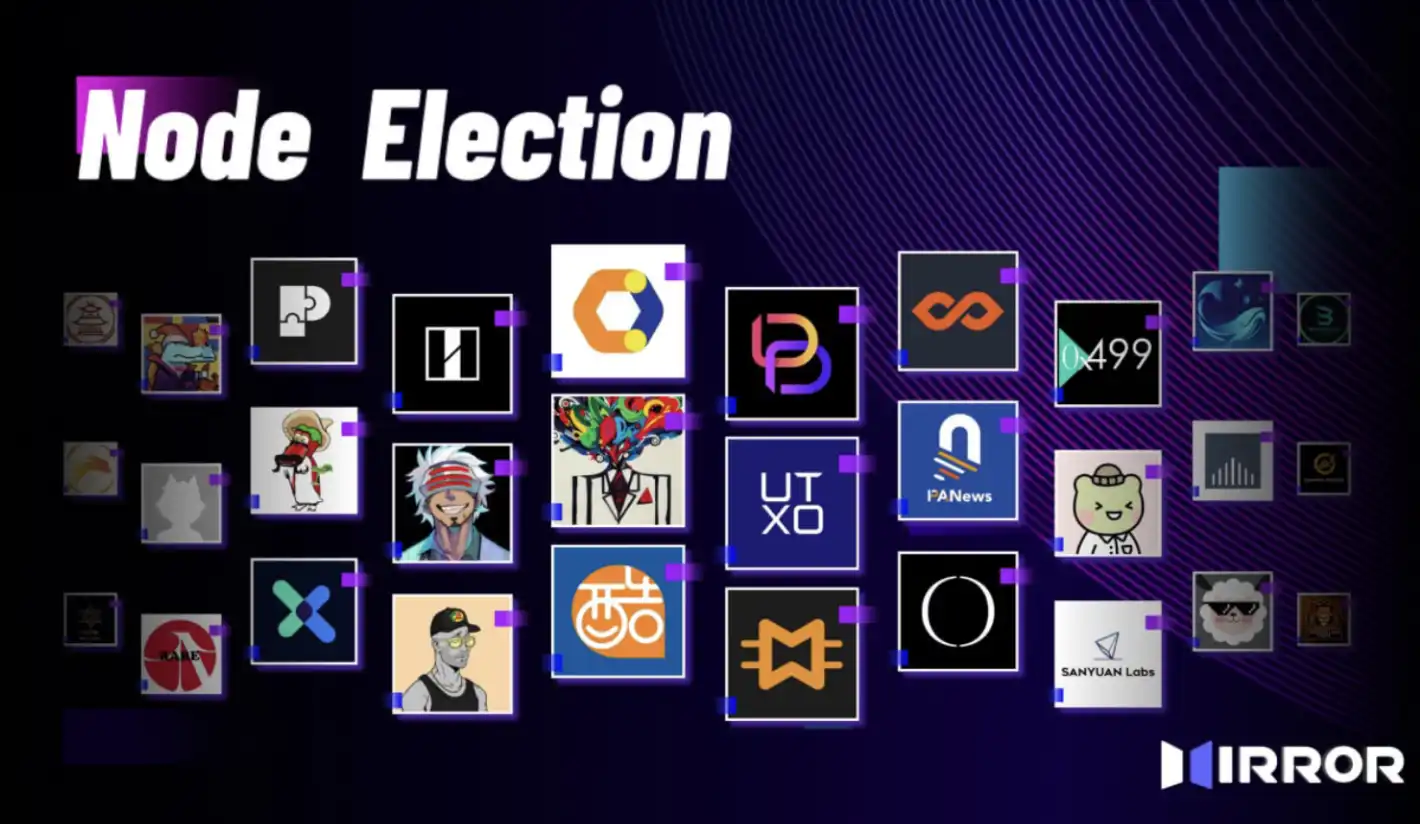
ロードマップとトークンエコノミクス
ロードマップ: 2024 年 3 月に、ミラー ステーキング プロトコルのテストネットが開始されました。これは、重複するマルチシグネチャ グループを利用して、ステーキングされた BTC L1 資産を PoS L1/L2 にブリッジし、BTC と 1:1 でペッグされる mBTC を生成します。 100 ノードの選挙は 2024 年 3 月までに完了しました。
ミラー ステーキング プロトコルのメインネットは 2024 年 5 月に開始される予定で、BTC L1 資産の PoS L1/L2 ネットワークへのステーキングとブリッジングが可能になります。このプロトコルは、アプリケーション シナリオ プロジェクトで他の PoS L1/L2 と連携して、真の分散型サービスを提供することを目的としています。他のPoS L1/L2と連携して、BTCベースのTVLとエコシステムを構築し、「Stake Once, Earn Double」などのキャンペーンを開始する予定です。
PoS L1/L2エコシステムにおけるmBTCアクセスの拡大は、さまざまなビルダーや開発者がPoS L1/L2と協力してBTCエコシステムを構築し、mBTCの再ステークを可能にすることをサポートするエコシステム基金の開始とともに継続していきます。
トークンエコノミクス: MIRR はミラーステーキングプロトコルのガバナンストークンであり、MIRR ガバナンストークンの総供給量は 10 億です。
ノードの場合は 24%: 4 つのラウンド (100、300、600、および 1000 ノード) があり、最初のラウンドは 100 ノードで構成され、各ノードのコール オプションの詳細は 0.12 ドルです。トークンは 12 か月間にわたって配布され、1 位にランクされたノードには 100 万のコール オプションが付与され、表 1 に示すように、この割り当ては 20 位にランクされたノードまで徐々に減少します。
ユーザーの場合は 26%: ユーザーは 10 四半期にわたって分配され、第 1 四半期には 1,000 万ドルが付与されます。ユーザーの分配も 12 か月の期間にわたって行われます。これには、ステークされた BTC 資産の TVL と招待された友人の割合が含まれ、各ユーザーには固有の招待コードが割り当てられます。直接招待された友人からの TVL は 50%、第 2 段階の友人からの TVL は 20% としてカウントされます。
さらに:
· 投資家向けの 14%: シードラウンドの投資家は 12 か月にわたってロック解除され、機関投資家ラウンドの投資家は 24 か月にわたってロック解除されます。
· プロジェクト チームとアドバイザーに 18%: この割り当ては 4 年間にわたってロック解除され、毎月配布されます。
· 財団財務省への 6%: この割り当ては 4 年間にわたってロック解除され、毎月配布されます。
· レイヤー 2 エコシステム開発準備金の 12%: この割り当ては 4 年間にわたってロック解除され、毎月配布されます。
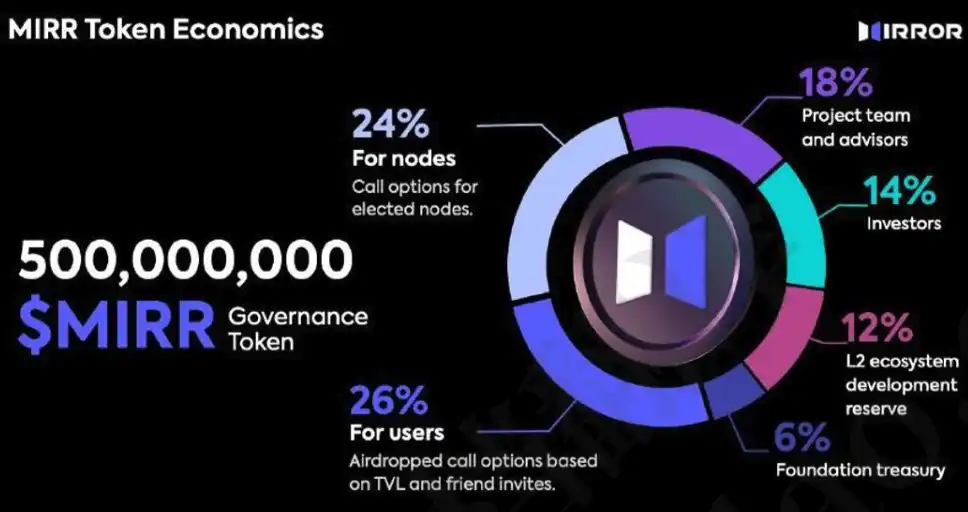
まとめ
1. ミラー プロトコルは、真に分散型でトラストレスなビットコイン ステーキング プロトコルであり、BTC を PoS L1/L2 にインポートするための分散型で安全なステーキング ソリューションを提供します。
2. チームメンバーはマイクロソフト、グーグル、マサチューセッツ工科大学、清華大学八尾クラスなどから構成されています。ミラー L2 の CSO は、IOI (国際情報オリンピック) の金メダルを 2 つ獲得しています。
3. オーバーラッピング マルチシグネチャ グループ (MSG) アルゴリズムを使用すると、ノードが自由に参加および脱退できるため、数千のノードが共同で保管管理を行うことができ、ビットコインのステーキング レート、セキュリティ、分散化のバランスを効果的に維持できます。これは、BTC の分散化の中心原則に準拠しています。自由に入力できるノード。
4. ミラー プロトコルのコア テクノロジーは、トップレベルの研究論文によって検証されており、監査済みのテストネットは現在稼働しており、50,000 を超える独立したアドレスが参加しています。
5.ミラー ステーキング プロトコルは、PoS L1/L2 が電気自動車メーカーの場合、ミラー プロトコルは、PoS L1/L2 が大規模言語モデル (LLM) に BTC をインポートするための真の分散型ソリューションを提供します。 )、Mirror Protocol は GPU クラウド コンピューティング センターであり、すべての PoS L1/L2 と連携でき、将来的には「Stake Once, Earn Dual Token Returns」キャンペーンを開始する予定です。
長期的な観点から見ると、ミラーはビットコインエコシステム内のアプリケーションシナリオへのさらなる分散型参加への扉を開くだけでなく、ミラープロトコルのモジュール式でスケーラブルな設計は、それが制限されないことを意味します。ビットコインにその基礎となる原理と技術的フレームワークをクロスチェーン操作や他のブロックチェーン資産のセキュリティに適用することができ、これにより、異なるブロックチェーンエコシステム間の相互運用性が強化され、多くの新しいユースケースが生まれます。



